
Newhaven is a channel ferry port in East Sussex in England, with regular passenger services to Dieppe.

New Cross Gate is a railway station in New Cross, London, on the Brighton Main Line and the London Overground. It is 2 miles 70 chains (4.63 km) down the line from London Bridge and is about 600 m (660 yd) west of New Cross station. It is in Travelcard Zone 2, and is operated by London Overground.
St Kilda railway station is a former railway station and current tram stop, located in the Melbourne suburb of St Kilda, Australia, and was the terminus of the St Kilda railway line of the Melbourne suburban rail system. It is the oldest surviving railway station building in Victoria. The building is currently used as retail premises, while the platform serves as stop 132 on tram route 96.

Volk's Electric Railway (VER) is a narrow gauge heritage railway that runs along a length of the seafront of the English seaside resort of Brighton. It was built by Magnus Volk, the first section being completed in August 1883, and is the oldest still operating electric railway in the world. It was not the first electric railway to be built, but was preceded by Werner von Siemens' 1879 demonstration line in Berlin and by the Gross-Lichterfelde Tramway of 1881, although neither of these now remain in operation.
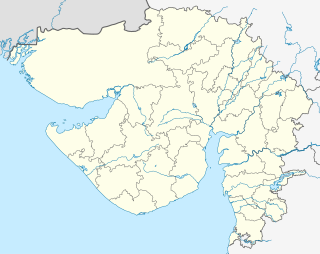
Valsad, also known as Bulsar, is a municipality in the Valsad district of the Indian state of Gujarat. This city has a collectorate, a district court, and a police headquarters with a historic prison.

Magnus Volk FII (1851–1937) was a British inventor and pioneering electrical engineer.

Air Commodore Charles Rumney Samson, was a British naval aviation pioneer. He was one of the first four officers selected for pilot training by the Royal Navy and was the first person to fly an aircraft from a moving ship. He also commanded the first British armoured vehicles used in combat. Transferring to the Royal Air Force on its creation in 1918, Samson held command of several groups in the immediate post-war period and the 1920s.

Brighton railway works was one of the earliest railway-owned locomotive repair works, founded in 1840 by the London and Brighton Railway in Brighton, England, and thus pre-dating the more famous railway works at Crewe, Doncaster and Swindon. The works grew steadily between 1841 and 1900 but efficient operation was always hampered by the restricted site, and there were several plans to close it and move the facility elsewhere. Nevertheless, between 1852 and 1957 more than 1200 steam locomotives as well as prototype diesel electric and electric locomotives were constructed there, before the eventual closure of the facility in 1962.
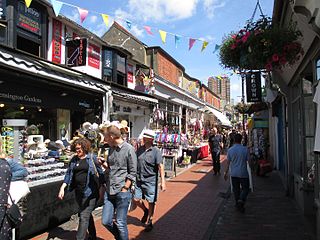
North Laine is a shopping and residential district of Brighton, on the English south coast. Once a slum area, its many pubs, cafés, theatres and museums now make it seen as Brighton's bohemian and cultural quarter.
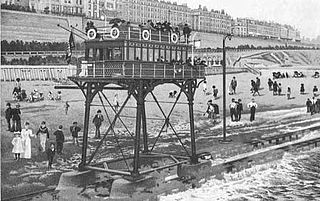
The Brighton and Rottingdean Seashore Electric Railway was a unique coastline railway in Brighton, England that ran through the shallow coastal waters of the English Channel between 1896 and 1901.
Public transport in Brighton and Hove, on the south coast of England, dates back to 1840. The city has a major railway station, an extensive bus service, many taxis, coach services, and it has previously had trolley buses, ferries, trams, auto rickshaws and hydrofoils.
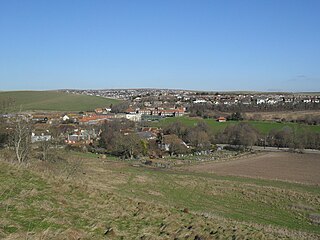
Ovingdean is a small formerly agricultural village in Brighton and Hove, East Sussex, England.
Moritz Immisch was an Electrical engineer, watchmaker and inventor.

Brighton Toy and Model Museum is an independent toy museum situated in Brighton, East Sussex. Its collection focuses on toys and models produced in the UK and Europe up until the mid-Twentieth Century, and occupies four thousand square feet of floor space within four of the early Victorian arches supporting the forecourt of Brighton railway station. Founded in 1991, the museum holds over ten thousand toys and models, including model train collections, puppets, Corgi, Dinky, Budgie Toys, construction toys and radio-controlled aircraft.
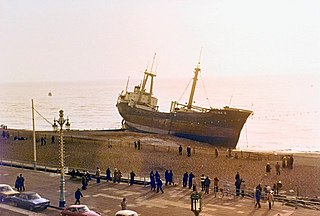
The Athina B was a merchant ship. On 21 January 1980 she suffered engine failure in bad weather and beached at the English seaside resort of Brighton, to the east of the town's Palace Pier. The ship was a temporary tourist attraction, with the Volk's Electric Railway opening out of season to cash in on the large number of sightseers. The anchor of the ship is on display on Brighton seafront. A restaurant in Brighton bears the name of the ship and a painting of Athena B by Dennis Roxby Bott is in Brighton Museum.

St Wulfran's Church, dedicated to the 7th-century French archbishop Wulfram of Sens, is an Anglican church in Ovingdean, a rural village now within the English city of Brighton and Hove. Parts of the structure date from the early 12th century, and the church is listed at Grade I, a designation used for buildings "of outstanding architectural or historic interest".

Black Rock is an area of undeveloped land located near Brighton Marina in the city of Brighton and Hove. It was previously the site of a swimming pool that was demolished in the 1970s.

The Clock Tower is a free-standing clock tower in the centre of Brighton, part of the English city of Brighton and Hove. Built in 1888 in commemoration of Queen Victoria's Golden Jubilee, the distinctive structure included innovative structural features and became a landmark in the popular and fashionable seaside resort. The city's residents "retain a nostalgic affection" for it, even though opinion is sharply divided as to the tower's architectural merit. English Heritage has listed the clock tower at Grade II for its architectural and historical importance.















